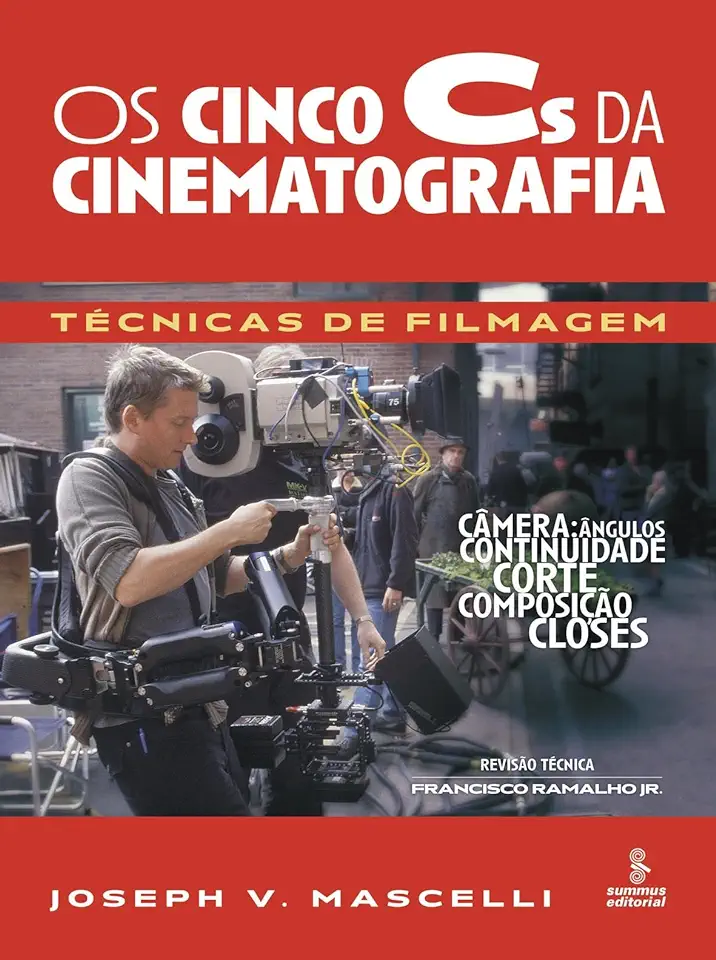
The Five C's of Cinematography - Motion Picture Filming Techniques - Joseph V. Mascelli
The Five C's of Cinematography: Motion Picture Filming Techniques by Joseph V. Mascelli
A Comprehensive Guide to the Art of Cinematography
In the world of filmmaking, cinematography is an art form that brings stories to life through the power of moving images. Joseph V. Mascelli's seminal work, "The Five C's of Cinematography," serves as a comprehensive guide to this captivating craft, offering a wealth of knowledge and insights for aspiring and professional cinematographers alike.
Mastering the Five C's
At the heart of Mascelli's approach lies the concept of the "Five C's" - Camera, Composition, Continuity, Cutting, and Control. These fundamental elements form the cornerstone of cinematography, and Mascelli delves into each aspect with meticulous detail and practical examples.
Camera
Mascelli begins by exploring the camera, the essential tool of any cinematographer. He discusses camera types, lenses, and their impact on the visual storytelling process. From choosing the right camera for a specific project to understanding the intricacies of lenses and their focal lengths, Mascelli provides a thorough foundation for cinematographers to make informed decisions.
Composition
Composition refers to the arrangement of elements within a frame to create visually pleasing and meaningful images. Mascelli delves into the principles of composition, including framing, lighting, and color theory. He explains how cinematographers can use these elements to evoke emotions, convey messages, and guide the viewer's attention.
Continuity
Continuity ensures that the visual flow of a film is seamless and coherent. Mascelli discusses the importance of maintaining consistent lighting, camera angles, and subject positions throughout a scene. He also covers techniques for handling transitions, such as dissolves and wipes, to create a smooth narrative flow.
Cutting
Cutting, or editing, is the process of assembling individual shots into a cohesive sequence. Mascelli explores the art of editing, including shot selection, pacing, and rhythm. He emphasizes the significance of creating a visual rhythm that enhances the storytelling and engages the audience.
Control
The final "C" stands for control, encompassing all the elements that cinematographers can manipulate to achieve their desired visual effects. Mascelli covers topics such as exposure, focus, depth of field, and camera movement. He explains how cinematographers can use these tools to create specific moods, atmospheres, and visual styles.
Practical Insights and Real-World Examples
Throughout the book, Mascelli reinforces his teachings with real-world examples from classic films and the works of renowned cinematographers. These examples illustrate the practical application of the Five C's and provide valuable insights into the decision-making process behind iconic cinematic moments.
A Must-Have Resource for Cinematographers
"The Five C's of Cinematography" is an indispensable resource for anyone passionate about the art of cinematography. Mascelli's comprehensive approach, combined with his clear and engaging writing style, makes this book a must-have for aspiring and professional cinematographers alike. Whether you're just starting out or looking to refine your skills, this book will provide you with the knowledge and inspiration to elevate your filmmaking to new heights.
Additional Features
In addition to the comprehensive coverage of the Five C's, the book includes:
- Detailed illustrations and diagrams to enhance understanding of complex concepts.
- In-depth interviews with renowned cinematographers sharing their experiences and insights.
- A glossary of cinematography terms for quick reference.
Conclusion
"The Five C's of Cinematography" is a timeless classic that continues to inspire and educate generations of cinematographers. Joseph V. Mascelli's profound understanding of the craft shines through every page, making this book an essential addition to any filmmaker's library. If you're serious about mastering the art of cinematography, this book is a must-read.